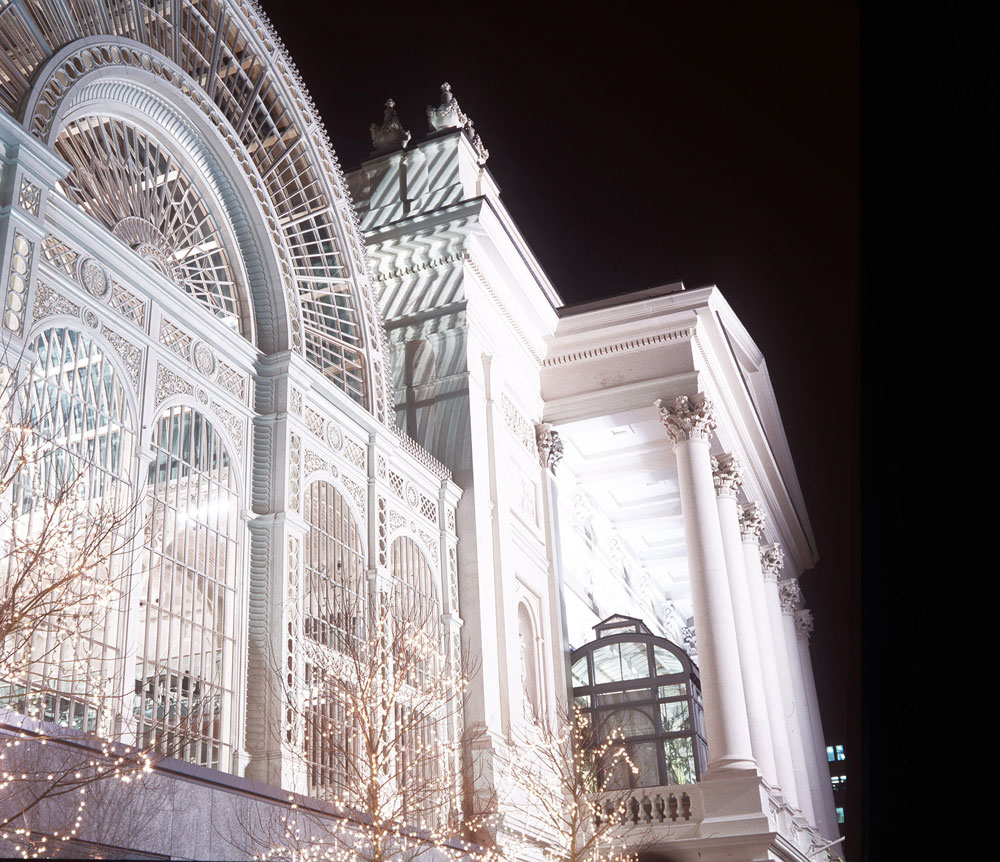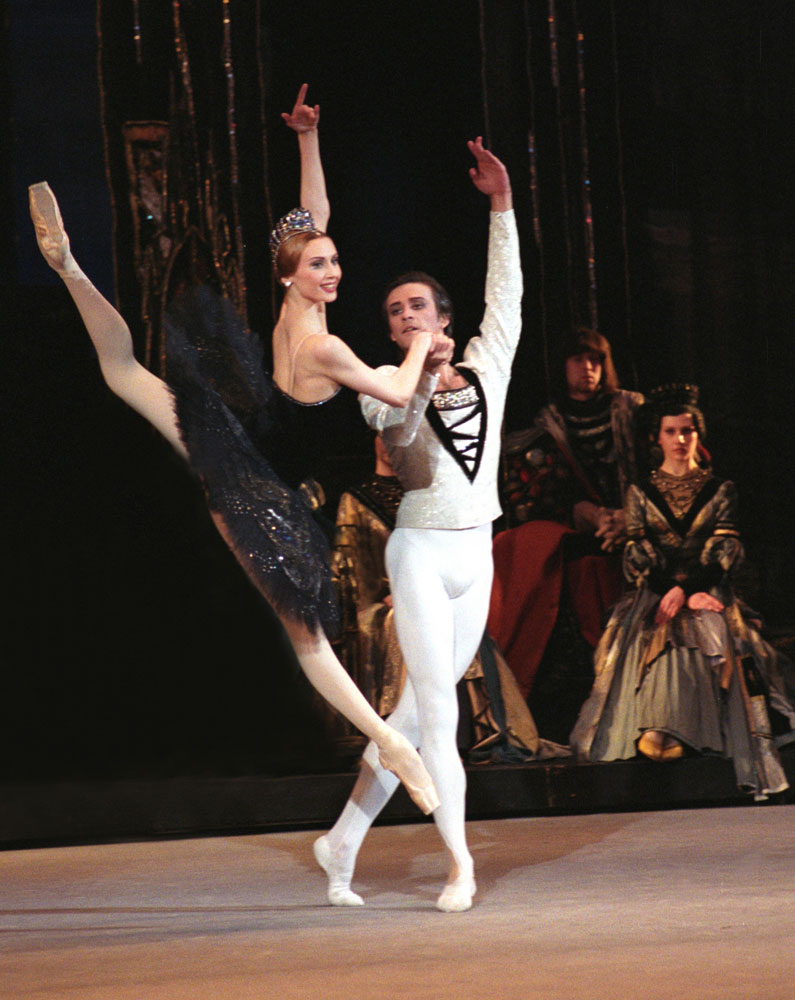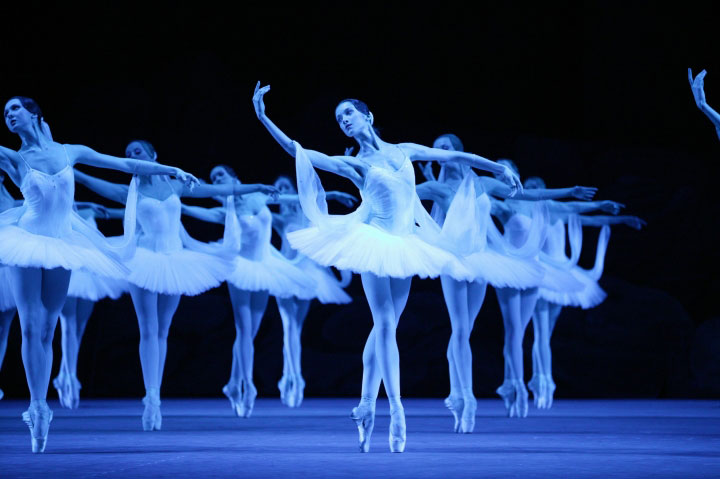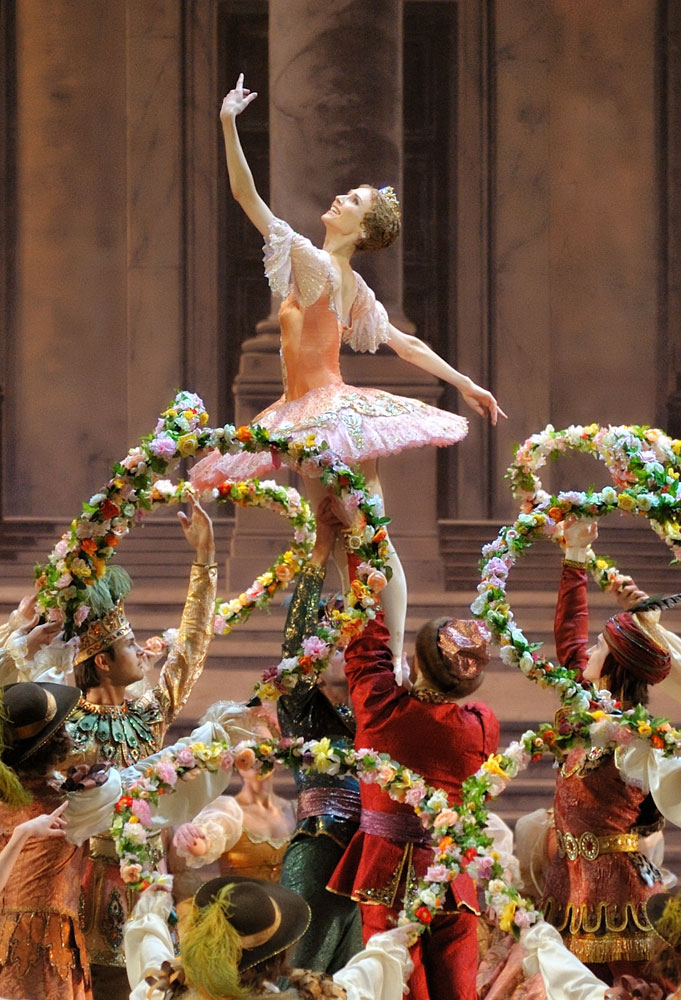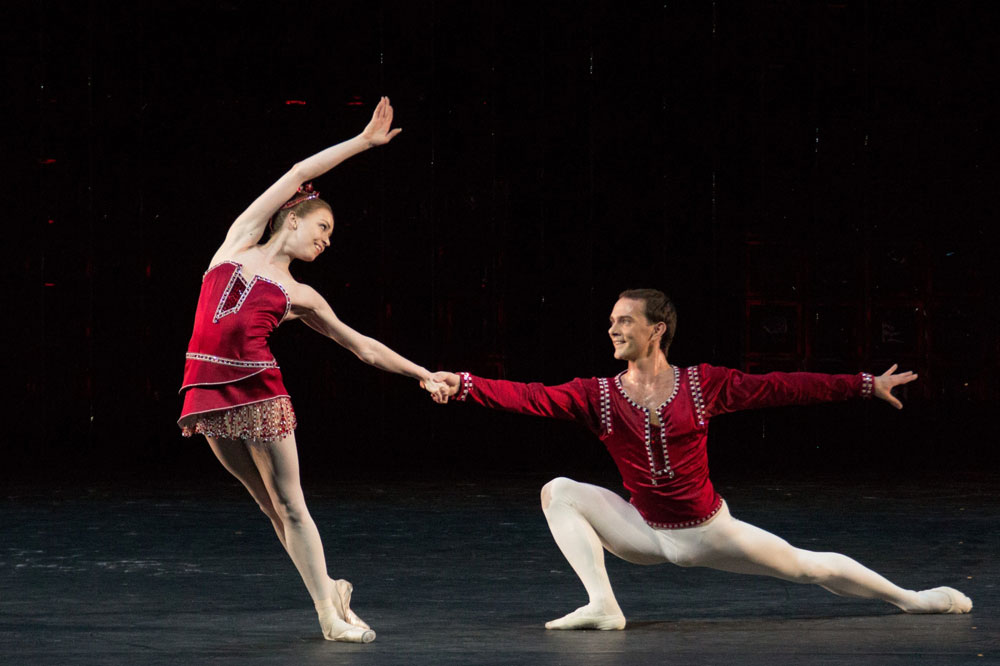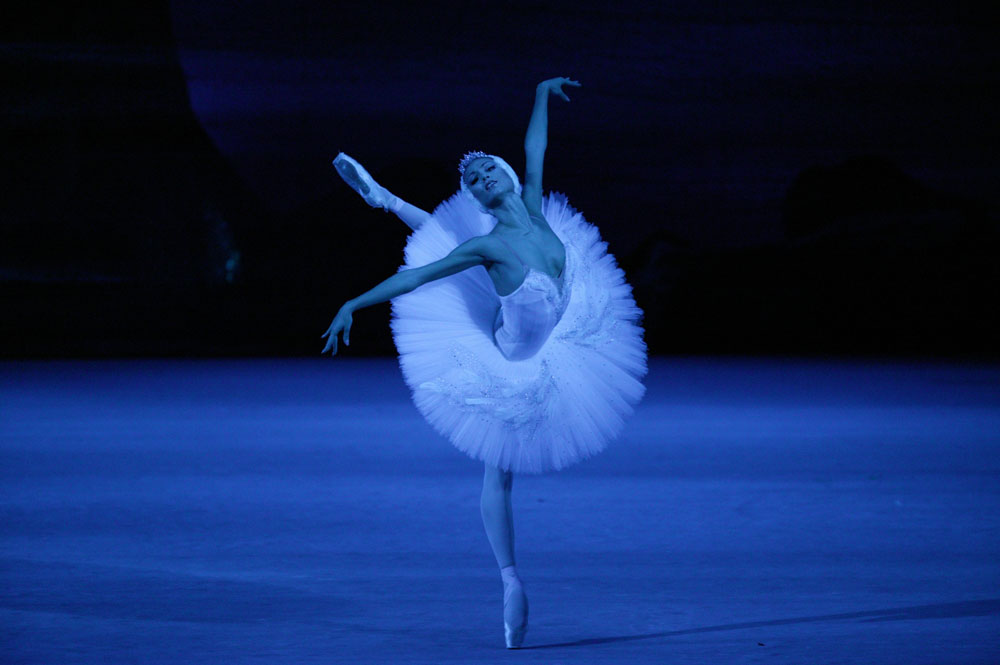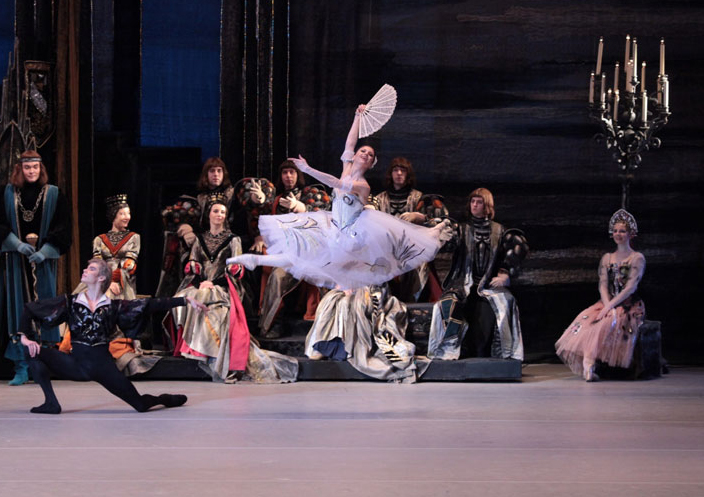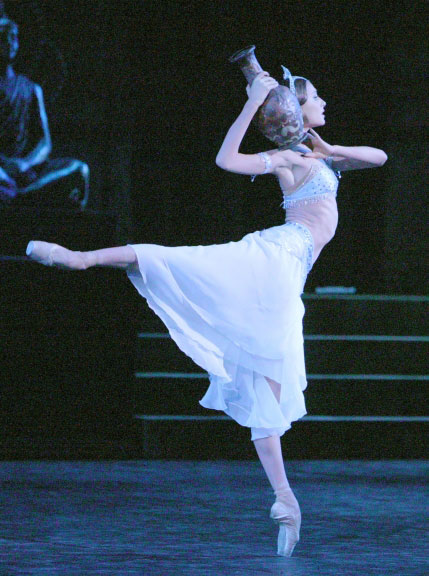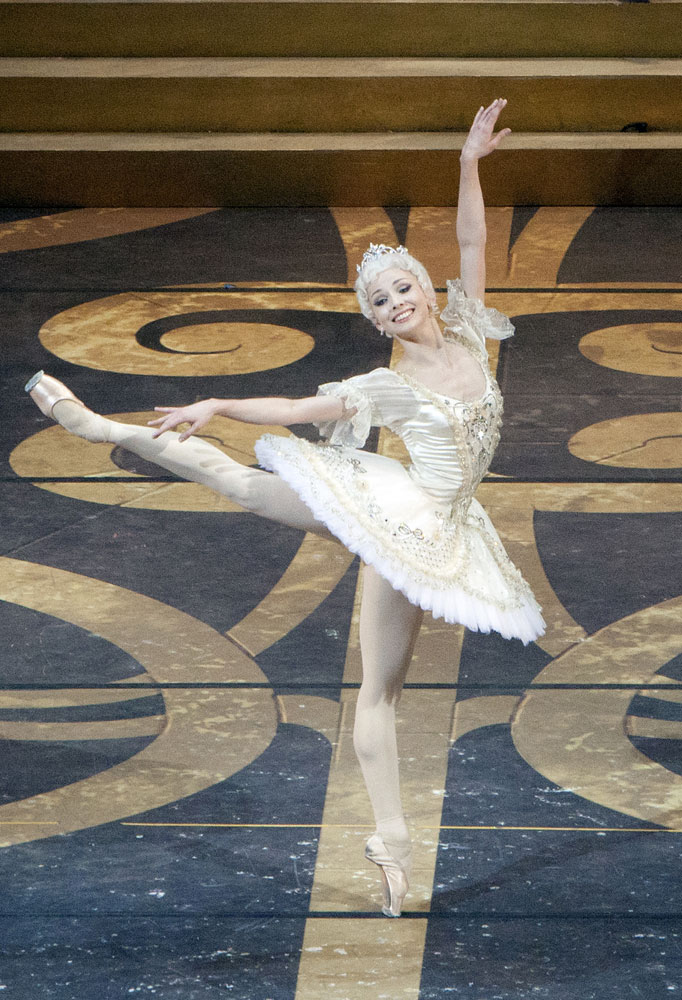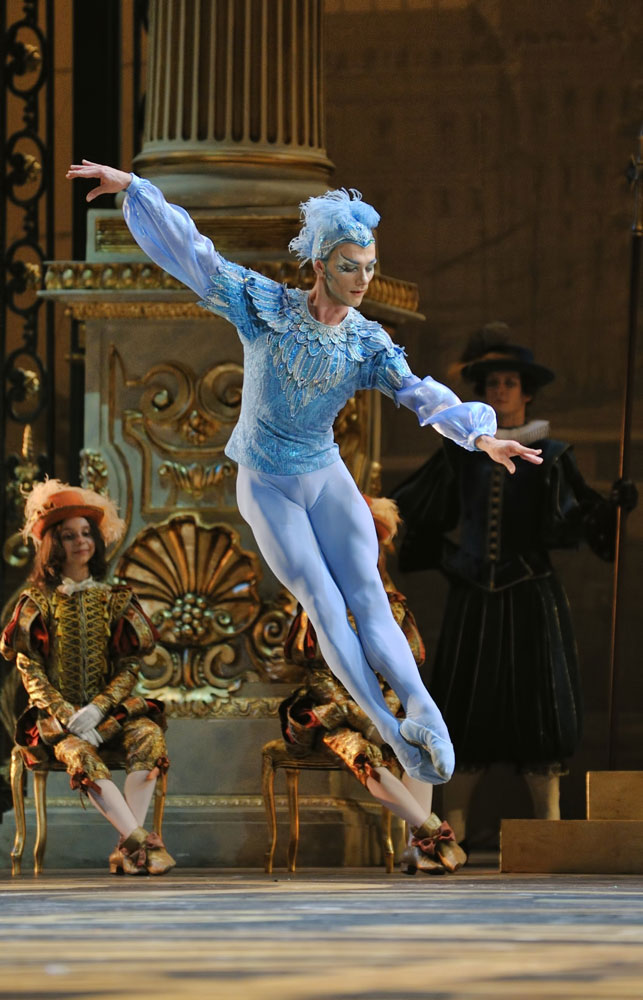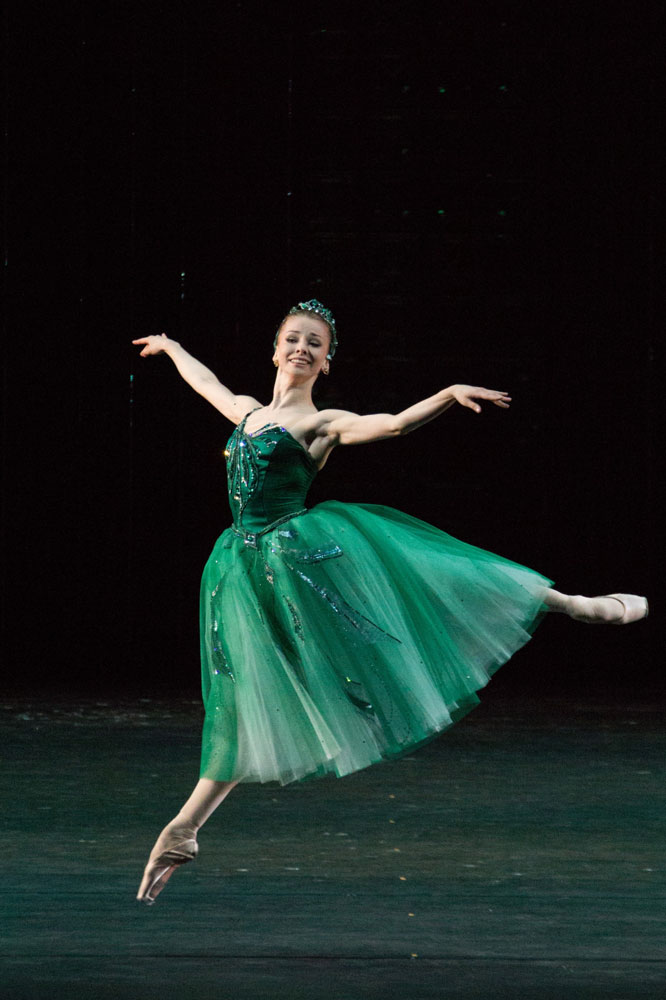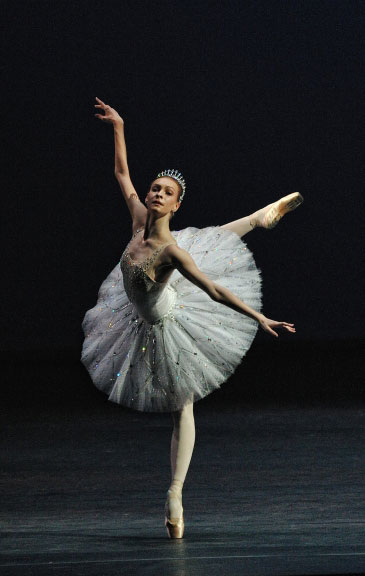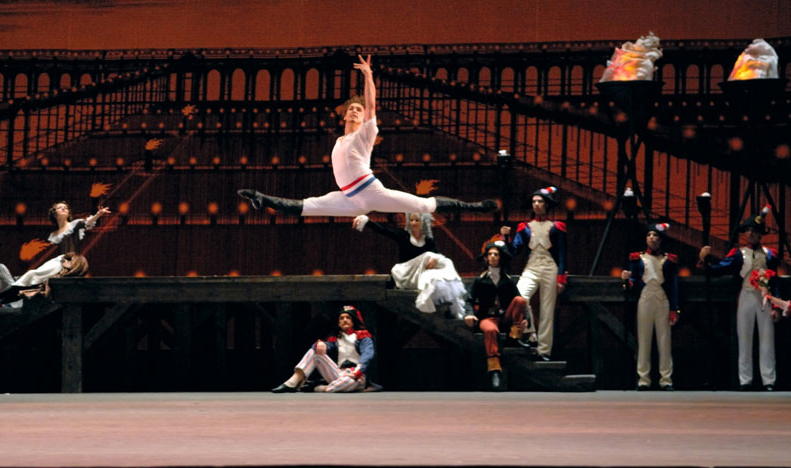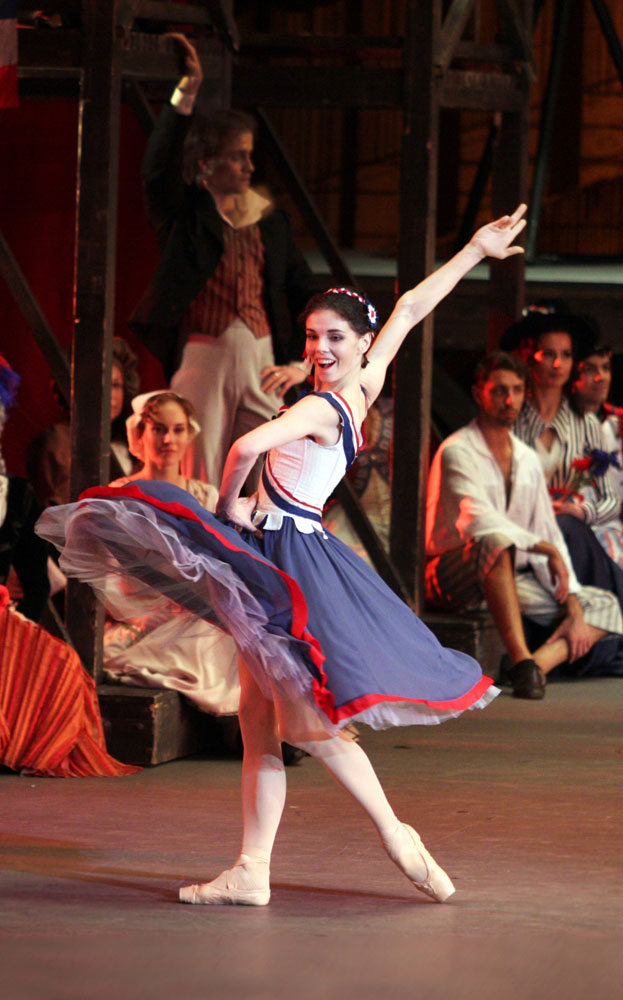The Bolshoi Ballet, with the Orchestra of the Bolshoi Theatre, returns to the Royal Opera House this month to celebrate the 50th anniversary of the Company’s first visit to Covent Garden under the banner of Victor Hochhauser. In a season which includes three grand classics – Swan Lake, La Bayadère and Sleeping Beauty – the Company also presents two UK premieres – Balanchine’s Jewels, and Alexei Ratmansky’s reworking of a Vasily Vainonen ballet, The Flames of Paris.
Founded in 1776, the Bolshoi is amongst the world’s oldest ballet companies, and, along with the Mariinsky Ballet in St Petersburg, is recognised not only as one of the foremost ballet companies in Russia, but in the world as well. It is also the largest ballet company (“bolshoi” in Russian means “big” or “grand”) with a complement of around 220 dancers, and is known for its distinctive style of performance – colourful and bold, demonstrating a widely acknowledged strength of technique infused with expressiveness and dramatic intensity.
The opening work of the Bolshoi’s London season is Yuri Grigorovich’s production of one of Russia’s greatest ballets, Swan Lake. Considering the popularity which this ballet has enjoyed for so many years, it’s hard to imagine that not even Tchaikovsky’s glorious score could override its initial failure. Tchaikovsky was commissioned to write the ballet in 1875, and it was premiered in Moscow in 1877. The choreography – by Julius Reisinger – was apparently thought to be dull and uninspiring, and the music was considered by conductors, dancers and audiences to be too complicated and not easy to dance to. It wasn’t until 1895, after Tchaikovsky’s death, that Swan Lake was revived, by choreographers Marius Petipa and Lev Ivanov, who produced the magnificent version on which most of today’s productions are based. London audiences will be delighted to learn that the role of Odette/Odile will be danced by Svetlana Zakharova.
Swan Lake is followed by another Petipa classic, the exotic La Bayadère (the Temple Dancer), also produced for the Bolshoi by Grigorovich. La Bayadère was first performed in St Petersburg in 1877, with a score by Ludwig Minkus, who at the time held the official post of Ballet Composer to the St Petersburg Imperial Theatres. This dramatic legend of passion, mystery, vengeance and tragedy, set in Royal India, is probably most widely known for its Second Act – frequently performed alone as The Kingdom of the Shades (spirits), a vision sequence set against the starlit peaks of the Himalayas. This new version by Grigorovich, with décor by leading Russian designer Nikolai Sharonov and costumes by Nikolai Sviridchikov, premiered in January this year, at the Bolshoi Theatre in Moscow.
The Sleeping Beauty, the second of Tchaikovsky’s triptych of so-called ‘white ballets’, was the work chosen to celebrate the reopening of the Bolshoi Theatre in 2011, after a massive six-year reconstruction. Based on Charles Perrault’s La Belle au bois dormant, with original choreography by Marius Petipa, The Sleeping Beauty was first performed at the Mariinsky Theatre in St Petersburg in 1890. This London production – the first performance of Yuri Grigorovich’s revival outside Russia – features costumes by Franca Squarciapino, and décor by celebrated Italian art director, Ezio Frigerio.
The first of the Bolshoi’s two UK premieres is George Balanchine’s superb creation, Jewels, which was originally premiered by New York City Ballet on April 13th, 1967, at New York State Theater. The first performance by the Bolshoi Ballet was at the Bolshoi Theatre in Moscow on May 5th, 2012. Inspired by the artistry of jewellery designer Claude Arpels, Balanchine expresses in this work his interpretation of the characteristics of each of the three jewels featured – the emerald, the ruby and the diamond. According to the Balanchine Foundation, the master choreographer considered emeralds to be “an evocation of France …. of elegance, comfort, dress, perfume” for which he selected music by Gabriel Fauré. Rubies is a “crisp and witty” jazzy piece, representing Balanchine’s collaboration with Stravinsky, and Diamonds is reminiscent of “the order and grandeur of Imperial Russia and the Mariinsky Theatre, where Balanchine was trained”, for which there could be no music more appropriate than that of Tchaikovsky.
The season ends with the UK premiere of Alexei Ratmansky’s remounting of The Flames of Paris, a ballet by Vasily Vainonen which was first performed in 1932. Set against the dramatic backdrop of the French Revolution, it has a score by composer and musicologist, Boris Asafiev, based on songs of the Revolution, and depicts the tumultuous events of that era – including the storming of the Tuileries by the Marsellais and their victorious march on Paris. Featuring what’s described as “one of the most stunning pas de deux in the whole of the ballet repertory”, these performances see the return to the Bolshoi of Natalia Osipova and Ivan Vasiliev. From the book by Alexander Belinsky and Alexei Ratmansky, the ballet – which had its premiere on July 3rd, 2008 – has been choreographed by Ratmansky, based on the original libretto by Nikolai Volkov and Vladimir Dmitriev.
The Bolshoi Ballet will be at The Royal Opera House, Covent Garden, from Monday July 29th to Saturday August 17th, 2013.
Photo gallery:
Sources:
M&C Saatchi Arts
Wikipedia

